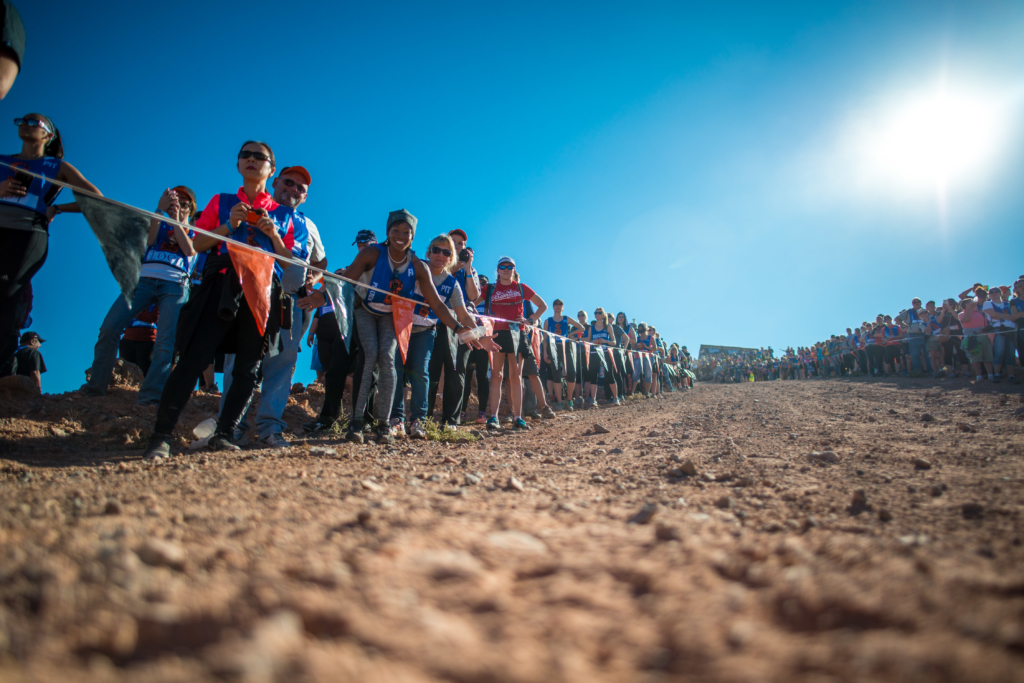
The joy and challenge of a 24-hour event are that you don’t need to run fast to succeed. With slow, constant forward progress you can cover a huge amount of ground so that you will look back on your day and feel like you have accomplished something great.
The general policy for all endurance races is to keep an equal effort for the entire time. For more on that, see my previous article! For World’s Toughest Mudder (WTM), there are a few extra challenges that you should take into account. In this article, I will break down the three main sections of the event and how they affect your pacing.
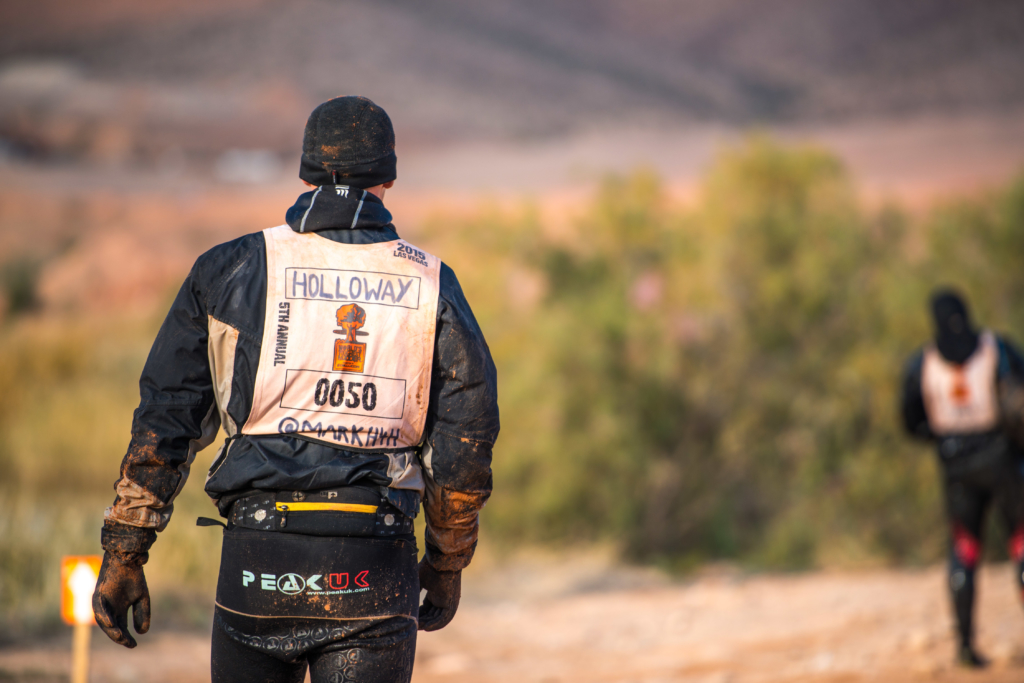
No matter what happens, people love to start fast in a 24-hour event because they know that they’ll be doing a zombie shuffle at the end. However, people do a zombie shuffle at the end partially because they start too fast and burn too hot. When you go out, your plan should be to run at a nice, comfortable pace. If you’re running your nice comfortable pace from a casual recovery run, take a breath and slow down. Recovery runs are usually an hour. You’re doing that 24+ times. Your event is not going to be made or broken by your daytime performance. It’s all about how you keep the slow burning ember within your soul throughout the night.
Section 1: Sprint Hour
Standard Difficulty: 12pm-1pm
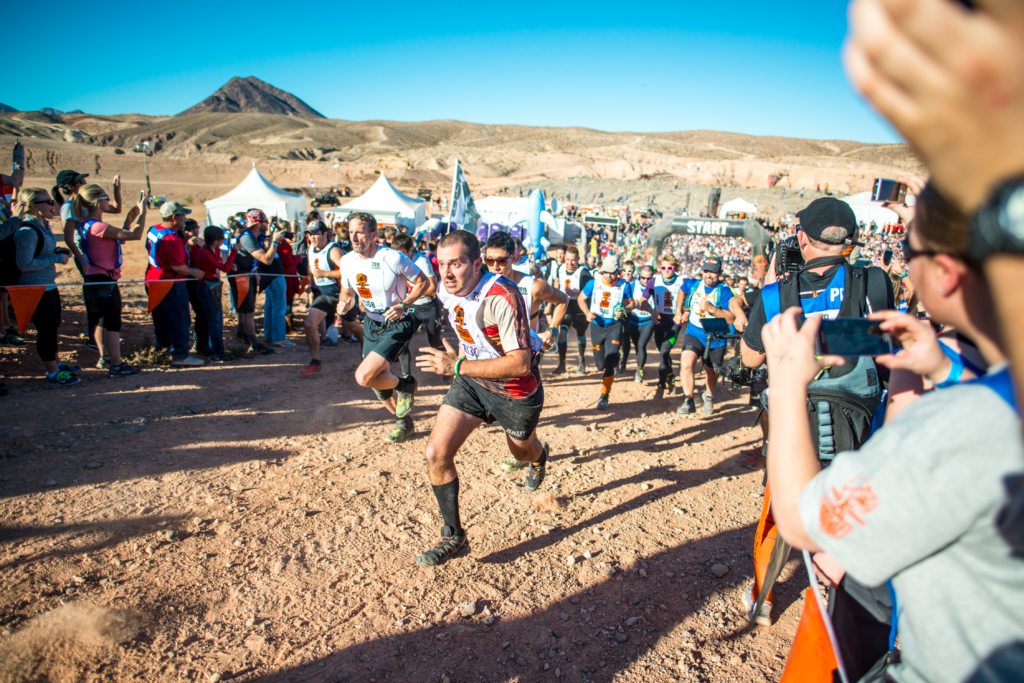
Formerly known as the sprint lap, there are no obstacles open for the first hour of the event. This gives you the opportunity to make up free distance and spread out the pack to reduce the lines on the obstacles. As for last year’s Sprint Lap winner, I know that it’s rare for someone to go out quick. I won last year by going out at a comfortable pace for me, then putting a little effort into the downhill at the end to stay in front. The top 4 finishers of the Sprint lap all finished 75+ miles that year.
Section 2: Daytime Obstacles
20% slower: 1pm-5pm(ish)
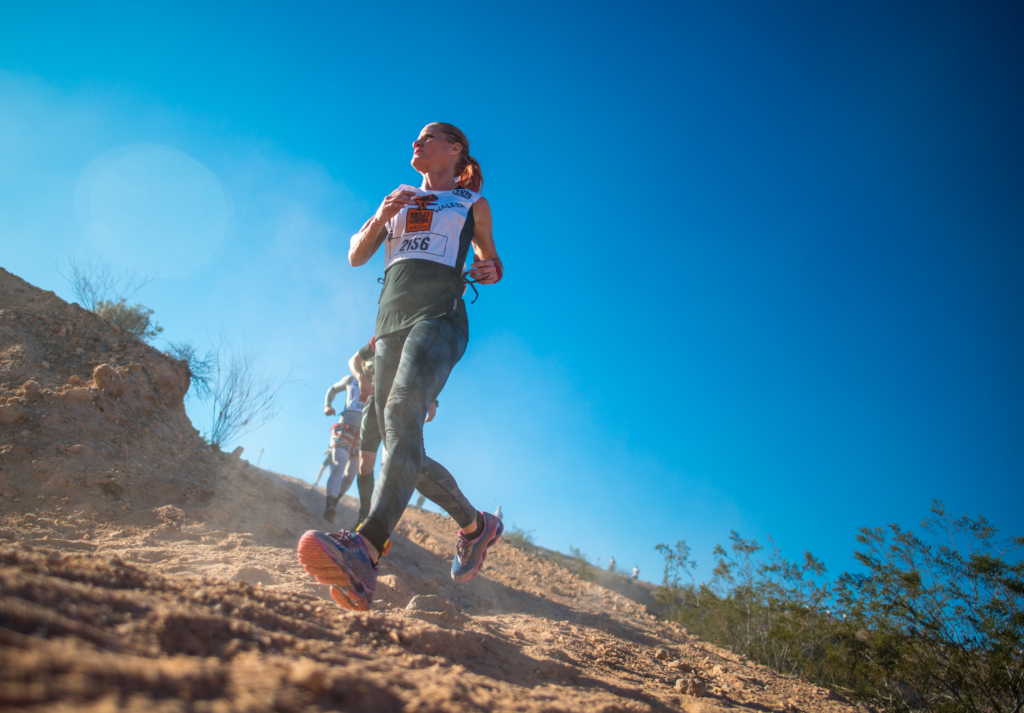
Once the obstacles open, they’re going to take time and effort from you. The famous Ryan Atkins stated a few years ago that Tough Mudder obstacles tend to slow you down about 20%. If you usually run a 10-minute mile, you’ll probably run around or at least a 12-minute mile with the obstacles.
Section 3: Night/Wetsuit Time
20% slower than obstacles: 5pm(ish)-1:30pm
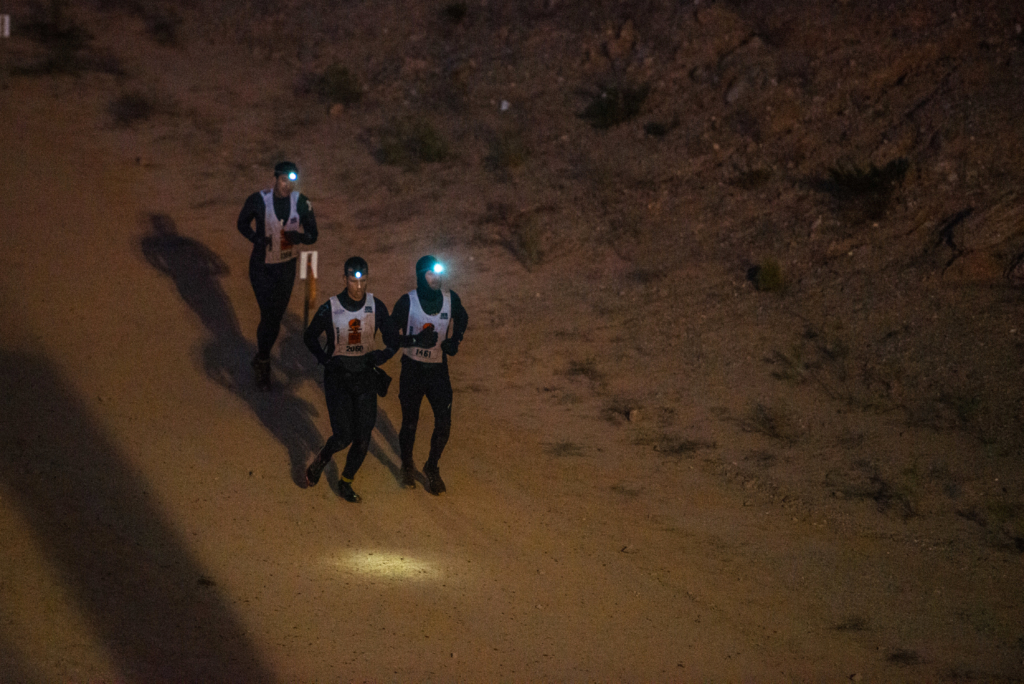
The characteristic challenge of WTM that people love to underestimate is the cold from the constant exposures to water. Every year people question whether you need a wetsuit for this event because it does slow you down and cause chafing. Let me say unequivocally: wetsuit required to complete more than 25+ miles. In my 2014 run where I got 75 miles, my paces on each lap were remarkably consistent throughout the entire event. I did 1:20 laps in the daytime, which increased to 1:40 laps when the wetsuit went on. Rinse and repeat that, and you’ll get 75 miles. If you do that math, you’ll see that I slowed down about 20%.
Section 4: Morning After
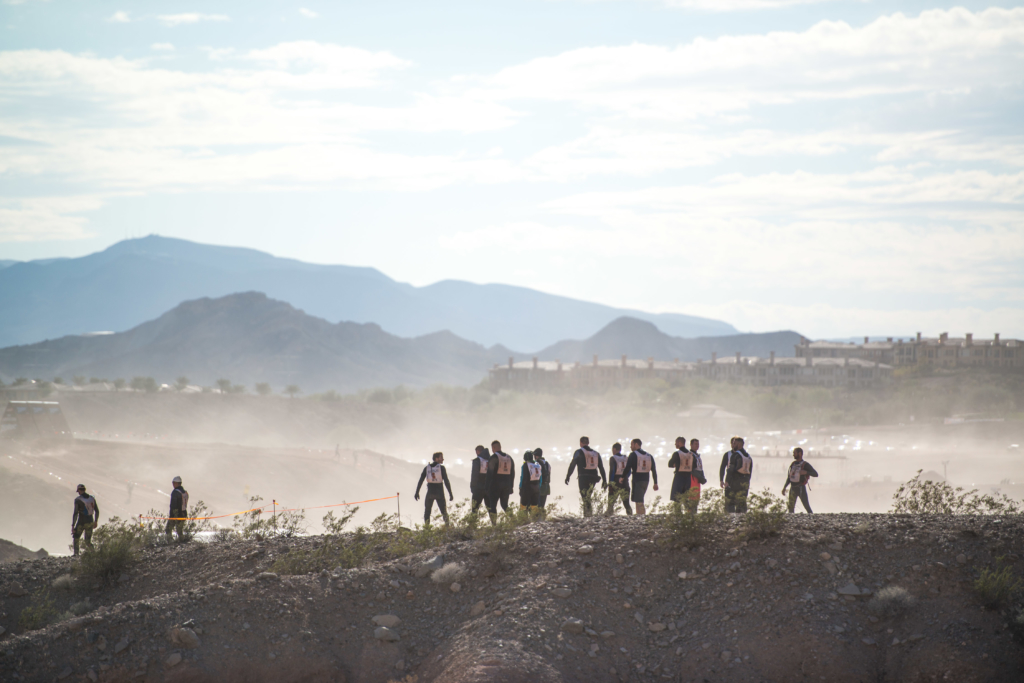
I do not believe that this section will be different from Section 3 this year. In 2014, the event started at 10 am and the finisher lap buffer ended at 12 pm. I was borderline hypothermic in my 3mm wetsuit when I finished at 11:15 pm and got medical aid after I finished. Even though Vegas gets hot after 10 am or 11 am, I think your core temperature will be so low that you won’t have the effort to switch out of your wetsuit.
Putting it all together
The Math
The hard question for pacing is how do you incorporate those three sections of the race to guide your pacing. It’s tempting to say that you should blow out on the first hour and the daytime so that you have a good base built before you hit the slow going section. However, as we talked about before, that’s going to cut deep into your energy reserves, so you won’t have as much hope of getting distance during the wetsuit portion. In the name of keeping your effort consistent throughout the whole event, I’ve made the following formula:
Mileage goal (miles) = base pace (min/mi) x (1h/1 sprint difficulty + 4h/1.2 obstacle difficulty + 20.5h/1.44 wetsuit difficulty)
This formula slows your pace down by 20% for each step up in difficulty and considers how long you’re at that difficulty level. Here’s how the math works out for what your goal pace should be for each section. Note that I don’t consider when you hit the 5-mile switch points, so this is a somewhat idealized version of planning. You should switch into your wetsuit when your lap includes nighttime, if not earlier. I also didn’t consider whether you’d be on your last lap by 24h, but I expect that last lap to be at or above 90 min, so it shouldn’t be a big issue.
Sprint Lap Pace by Mileage Goal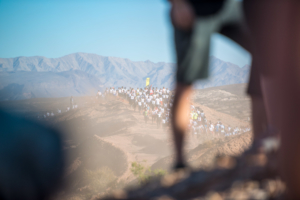
100 mile goal: 11:08 min/mile
75 mile goal: 14:51 min/mile
50 mile goal: 22:17 min/mile
25 mile goal: 44:34 min/mile
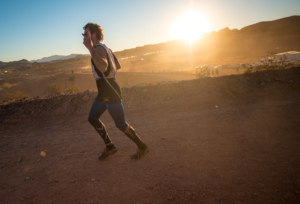 Daytime Lap Pace by Mileage Goal
Daytime Lap Pace by Mileage Goal
100 mile goal: 13:22 min/mile
75 mile goal: 17:49 min/mile
50 mile goal: 26:44 min/mile
25 mile goal: 53:28 min/mile
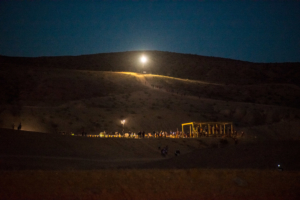 Wetsuit Lap Pace by Mileage Goal
Wetsuit Lap Pace by Mileage Goal
100 mile goal: 16:02 min/mile
75 mile goal: 21:23 min/mile
50 mile goal: 32:05 min/mile
25 mile goal: 64:10 min/mile
While these are your ideal paces, recognize that WTM will present itself with unique challenges. Be prepared to be uncomfortable, and be ready to go through something mentally challenging to push yourself to keep on going. Since I am contemplating trying to hit 100 miles this year, I am seriously considering running 100-mile paces for as long as possible and seeing how long I can take till I crash, which is not a recommended strategy. Just know that when (not if) you are going through a hard time, of course, look to your fellow Mudder for mental and physical help. If someone is running your pace or slightly faster, use them as a rabbit and a mental partner. You’ll make life-long friends and be more likely to succeed.
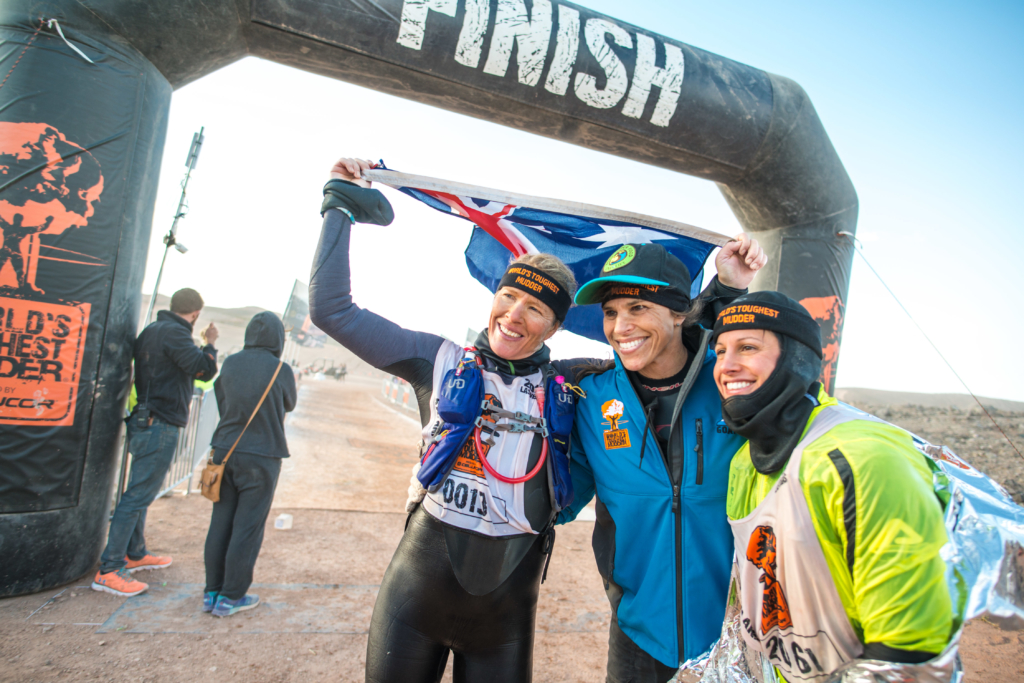



Doc Red Tights crunching the numbers again, love it!
Awesome post! Thanks, Doc!
Love the article! However I believe the ‘base pace’ in the formula should be in miles/hour, not minutes/mile right? So if you ran at 5 mph base, then, it would be 5 mph X (1/1 + 4/1.2 + 20.5/1.44) which is about 92 miles.
But I think this is an overestimate because if you’re running 20% ‘slower’ with the obstacles, that part should be calculated (4 hours X .80), which is 3.2, not (4 hours/1.2) which is 3.333…
I suggest the formula should be written like this:
Total Miles = Base Pace (in MPH) X (1 + (4h X .80) + (20.5h X .80 X .80))
The ‘1’ is for the sprint hour, the 4 x .8 is for obstacle laps, and 20.5 x .8 x .8 is for obstacle+wetsuit laps. People can change the .80 to whatever percent they think the obstacles and wetsuit will slow them. The formula simplifies to:
Total Miles = Base Pace (in MPH) X 17.32
Thanks Wes! Love the breakdown and the numbers for goals.
God Bless you Dr. Redtights as you seek 100 miles. High 5 me every time your about to pass me. Thanks for the good read. One foot in front of the other. #WetsuitonBEFOREsunsets. 50/50 for David Bird, Whitney, Mark & I.
http://Stbaldricks.org/participants/BrianMuttee